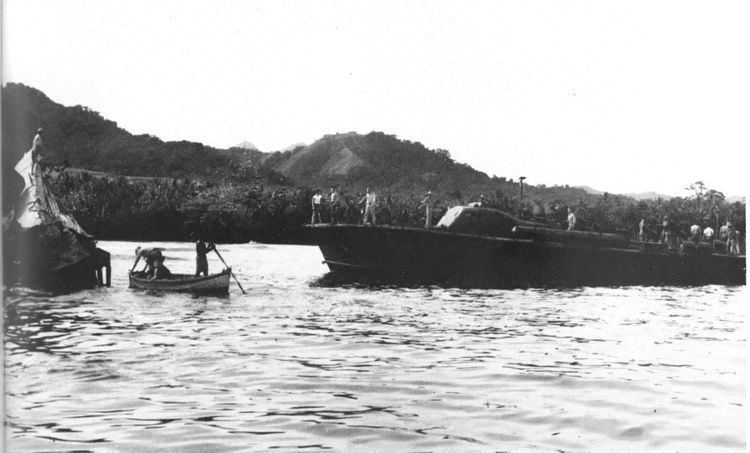Name I-1 Class and type J1 type submarine Construction started 12 March 1923 Length 98 m | Commissioned 10 March 1926 Beam 30 ft (9.1 m) Launched 15 October 1924 Draft 5.03 m | |
 | ||
Fate wrecked 29 January 1943 Displacement 2135 tons (surfaced) 2,791 tons(submerged) Builders Kawasaki Heavy Industries, Kobe | ||
The Japanese submarine I-1 was a J1 type submarine built by Kawasaki, Kobe, for the Imperial Japanese Navy. She was a large cruiser submarine displacing 2,135 tons and was the lead of four boats built in the class.
Contents
She was commissioned on 10 March 1926 and served in the Second World War. On 29 January 1943, during Operation Ke, the New Zealand naval trawlers Kiwi and Moa intercepted and wrecked her after a surface battle at Kamimbo Bay, Guadalcanal.
Her war activity
Her wrecking
On 29 January 1943 she encountered the much smaller 607-ton New Zealand minesweepers, Kiwi and Moa. Unable to penetrate the I1's armour with their deck guns, the minesweepers rammed and chased her to shallow water, eventually forcing her to run aground on the reef at Kamimbo Bay, Guadalcanal. The wreck partially protrudes from the water. Coincidentally the Kiwi and Moa's only sister ship, HMNZS Tui sank the I-17 seven months later.
Critical codes remained on board and the Japanese command tried unsuccessfully to destroy the boat with air and submarine attacks. The US Navy reportedly salvaged code books, charts, manuals, the ship's log and other secret documents.
I-1's pennant is on display at the National Museum of the Pacific War in Fredericksburg, Texas.
Japanese effort to destroy the wreck
Postscript
In 1968, I-1’s main deck gun was recovered and brought to Auckland, New Zealand aboard the HMNZS Otago for display at the Torpedo Bay Navy Museum.
Around 1970, an Australian treasure hunter in search of valuable metals blew up the bow section of the I-1. This caused much damage since live torpedoes were still inside. The bow section of the sub still remains, split open. The front one-third of the submarine is destroyed but the remaining section is still intact. The I-1 lies with her bow in 45 feet (14 m) and her stern in 90 feet (27 m) of water.
